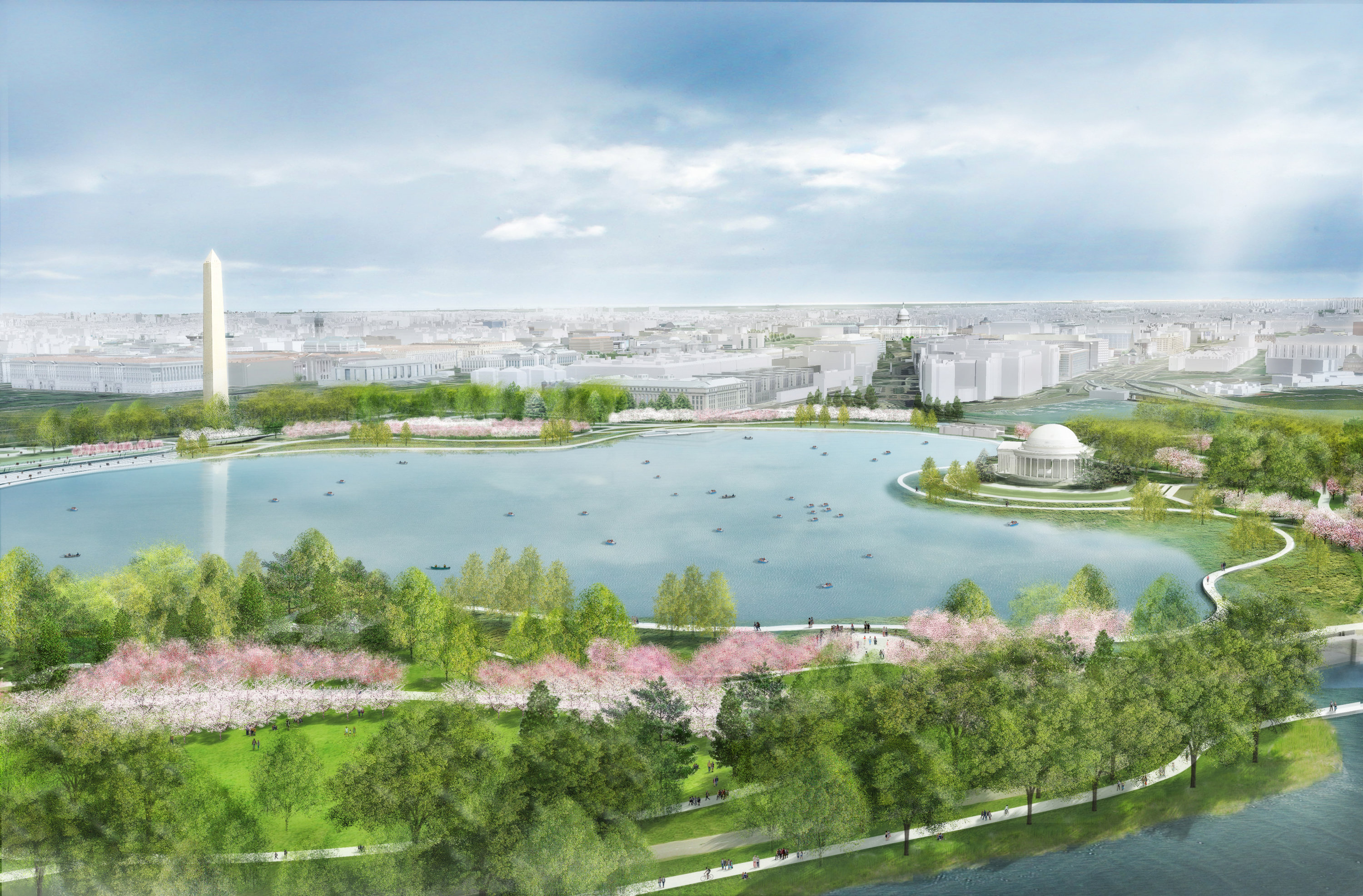

After several small celebrations marking the trees’ bloom, local civic groups organized the first official Cherry Blossom Festival in 1935. In subsequent years, workmen planted the remaining trees around the basin and the Washington Monument and along East Potomac Park, creating a tapestry of pink blossoms every spring. On March 27 of that year, First Lady Helen Taft and Viscountess Chinda Iwa, wife of the Japanese ambassador, planted the first two Yoshino cherry trees on the northern bank of the basin, about 100 feet south of what is now Independence Avenue SW. The renowned cherry trees-more than 3,000 of them-arrived in 1912 as a gift from Japan. In 1897, Congress designated the recently formed parkland to be used for the “recreation and pleasure of the people.” Bridle paths, boating facilities, and a bandstand soon followed. (As part of the Ideas Lab, theįive landscape architects are also addressing solutions for the gates.) Over the gates or flows between the openings. Silt has built up onīoth sides of the massive doors, which can barely open. Outlet gates haven’t been fully operational in decades. Of debris, allowing deep-hulled boats to navigate its waters. The force of the waterĮxiting the outlet gates as the tide ebbed helped flush the Washington Channel Rushed through the inlet gates, filling the basin. TwiceĪ day at high tide, around 250 million gallons of water from the Potomac River Sets of gates at the entrance and exit of the newly created inland pond.

In the 1890s and early 1900s, engineers installed multiple Army Corps of Engineersĭredged shipping channels along the Potomac River and used sediment to fill in West Potomac parks, which surround the basin, the U.S. To build up the land that would eventually form East and This is our nation’s capital and a symbol of democracy, but it just becomes harder and harder to physically maintain it under these conditions.” “But we want them to come here and come back. “It’s just over the top in terms of use and the amount of people who come here,” says Durkin, who has worked at the Trust for the National Mall since 2012. And if they arrive in a wheelchair or with kids in a stroller, maneuvering around the Tidal Basin Loop Trail becomes nearly an impossible feat. Without a navigable walkway, people clamber over tree roots and turn the soil into hardpan, which doesn’t drain properly. More than 1.5 million of them stroll among the cherry trees during the 4-week National Cherry Blossom Festival each spring. The National Mall is the country’s most visited national park, with some 36 million sightseers annually. It’s an unsustainable combination, and conditions are only expected to get worse.Īnother problem is that the basin was never meant to accommodate the sheer number of people who come every year. Making matters worse, the basin was constructed on manmade land and is slowly sinking. That makes a huge difference in the severity of storm surges and high tide flooding. Scientists estimate an increase of 11 inches or so in the past 90 years. “I didn’t realize conditions were this bad,” I say.ĭue to climate change and runoff caused by development along the river, water levels in the Potomac River have risen since the Tidal Basin’s construction as part of the National Mall in the late 1800s. “I’ve found river snails up on the lawn.”įrankly, I’m kind of shocked. “You don’t expect to find driftwood under the cherry trees, do you?” she asks. Instead, there’s a small flock of Canada geese poking in the mud.ĭurkin points to a pile of driftwood under a tree. In one 100-foot-long swath, no cherry trees remain at all. Many of the trees in this section west of the Jefferson Memorial are dying-or dead-from soil compaction and exposure to the brackish water. We pass by the exposed roots of the famed cherry trees, which run like twisted veins just beyond the water’s edge. “If someone wanted to walk from here to the FDR Memorial across the way, how would they even do it?” asks Durkin. At high tide, when the Potomac River swells and the basin fills with millions of gallons of water, this area is completely submerged. The sidewalk itself is nothing but mud.įrom the Jefferson Memorial, she leads me clockwise around the Tidal Basin path, as we gingerly try to avoid the muck. Sections of the wall have separated from the concrete walkway and lean precariously over the water’s edge. Durkin, executive vice president of the nonprofit Trust for the National Mall, points out the crumbling stone seawall, which encircles the pond for about 2 miles. As Teresa Durkin walks around Washington, D.C.’s iconic Tidal Basin, she is frustrated by what she sees.


 0 kommentar(er)
0 kommentar(er)
